
The What is a Temperature Controller? video highlights all the fundamental components that make up a temperature controller, their interaction, the safety features available, and operation of a controller when using remote setpoint input. It is available to view on our YouTube channel. Click here to view the video.
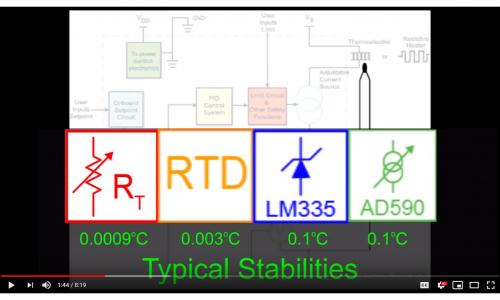
Subscribe to our newsletter for tips, techniques & product updates.
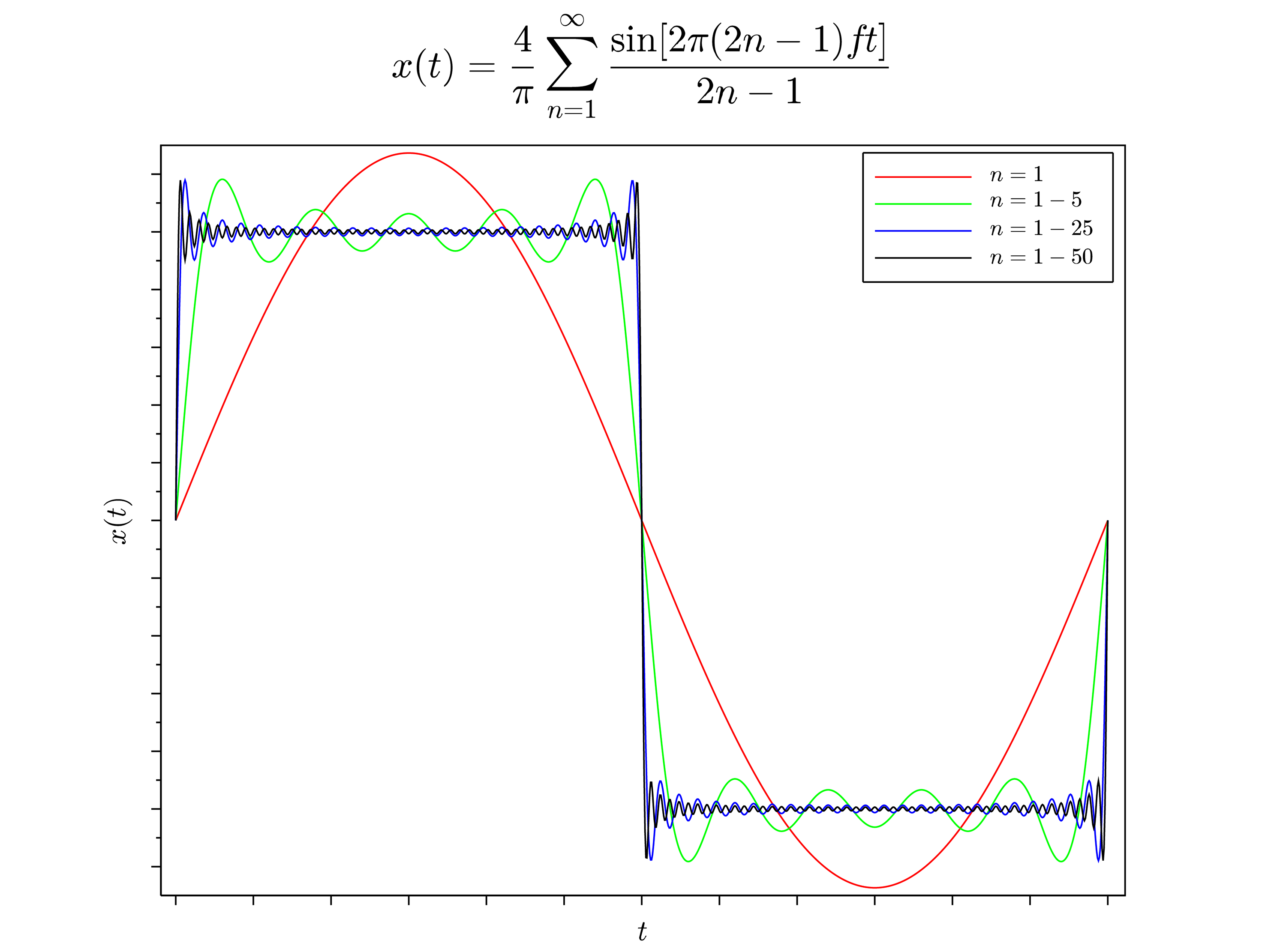
Operation of a laser diode, a laser diode driver, and a power supply at high currents (greater than 10 A) and high modulation frequencies introduces technical difficulties that may not appear when operating under less demanding conditions. The latent electronic limitations become a dominant factor in performance. Without special care, the system as a whole can see degraded performance. In TN-LD04, design issues are discussed with reference to modulation waveforms at greater than 10 A operation. Design solutions are presented, as well as suggestions for choosing a well-suited power supply.
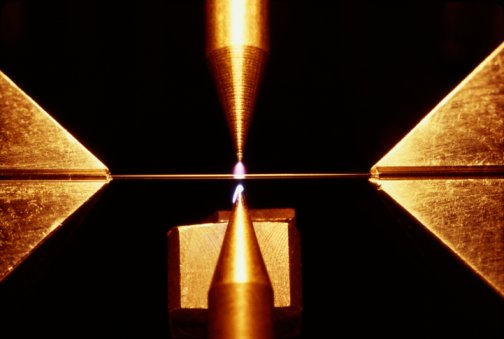
Diode lasers are used for materials processing tasks such as cutting, welding, marking, hardening, soldering, and brazing among others. Given the relatively low maximum power of an individual laser diode, bars (1-dimensional array of emitters) and stacks (2-dimensional array of emitters) are used to increase the overall output power of the materials processing system. The new 15A / 30V LD15CHA Laser Diode Driver, which boasts a 600 kHz bandwidth and RMS Noise Current as low as 35 μA at 100 kHz, is well-suited to these applications.
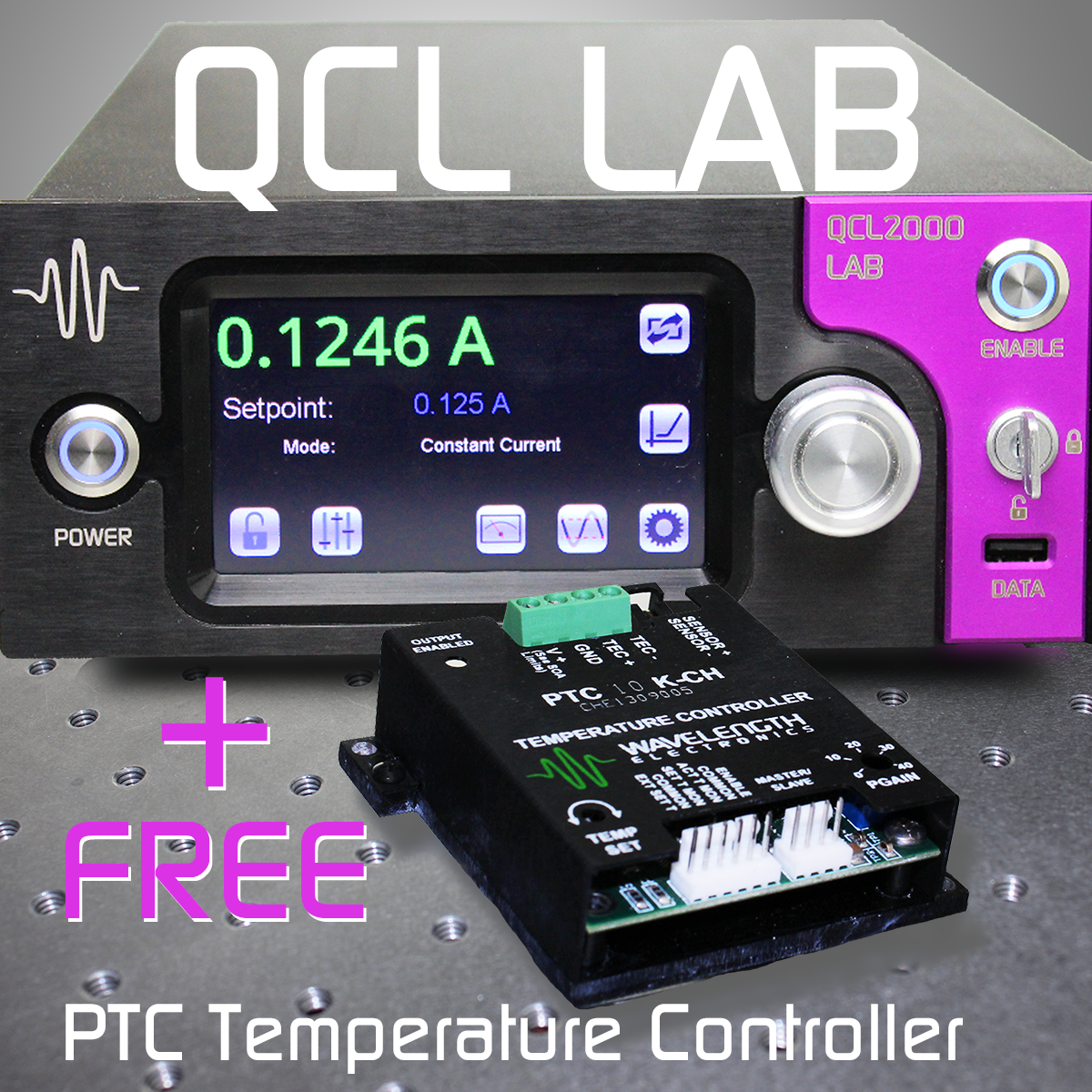
For a limited time, get a FREE PTC-CH temperature controller with the purchase of a QCL LAB Series instrument. This is the perfect combination to temperature stabilize your low-noise, narrow linewidth QCL. For more information go to the QCL2000 LAB product page.
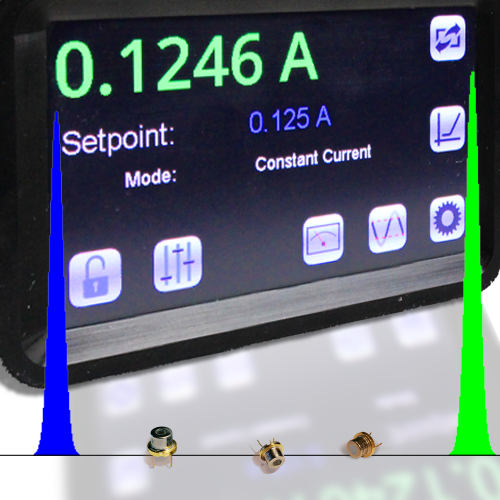
The QCL LAB drivers can be used with any laser diodes that have greater than 4V forward voltage. It’s perfect for driving blue or green laser diodes that need low noise and narrow linewidth. The QCL LAB acts as a controlled current sink, meaning that the anode of the laser diode will be held at a ground potential, while the cathode is then a negative voltage. The laser diode cathode must not be connected to case or earth ground, otherwise there will be a load short.
For more information, view the complete FAQ.
We invite you to contribute topic suggestions, questions, and general feedback. Wavelength will incorporate as much reader input as possible.
Click to Submit


